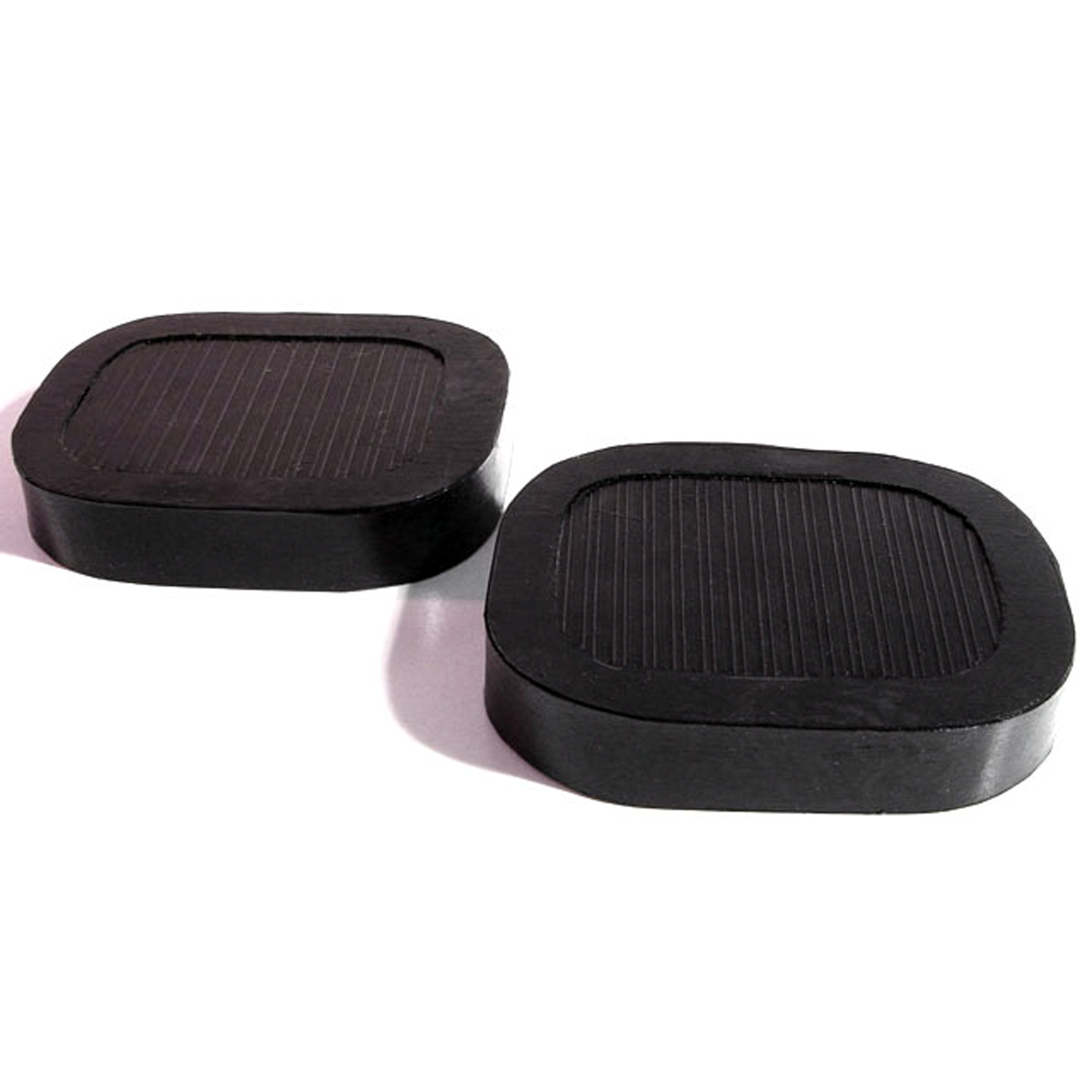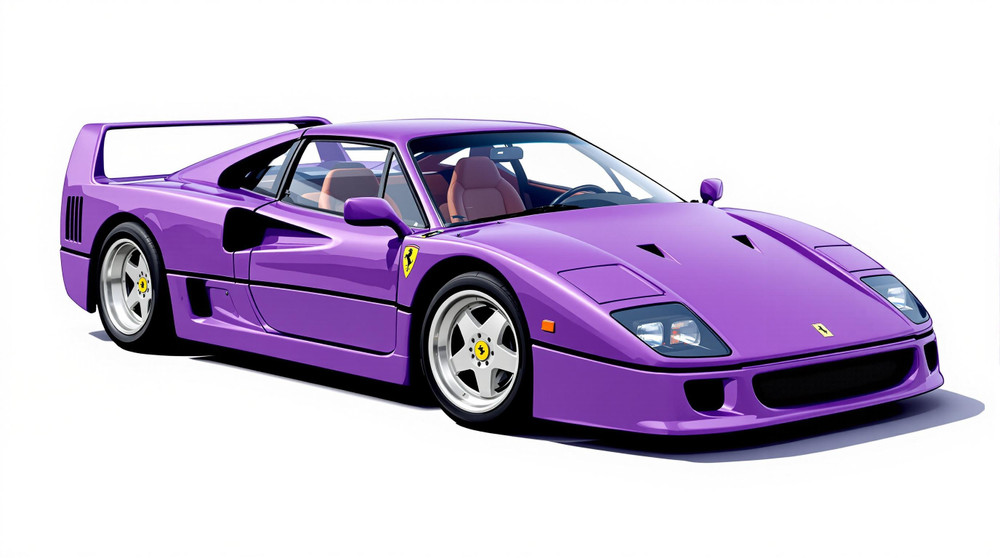Image of 1990 Ferrari F40, Note: These illustrations use artistic license and may differ from actual historical models.
Performance Metrics
Fundamental Metrics
Emotional Appeal
MMP Rating
| Engine Specifications | |
|---|---|
| Engine: | 2.9L V8 Twin-Turbo |
| Displacement: | 2936 cc |
| Horsepower: | 471-478 hp @ 7000 rpm |
| Torque: | 425 lb-ft @ 4000 rpm |
| Compression Ratio: | 7.7:1 |
| Ignition System: | Electronic |
| Cooling System: | Liquid-cooled |
| Performance Specifications | |
| 0-60 Time: | 4.1 seconds |
| 1/4 Mile Time: | 12.1 seconds |
| Top Speed: | 201 mph |
| Transmission and Drive | |
| Drive Type: | RWD (Rear Wheel Drive) |
| Transmission Type: | 5-speed manual |
| Fuel and Efficiency | |
| Fuel System Type: | Electronic Fuel Injection |
| MPG: | 10-15 mpg |
| Dimensions and Brakes | |
| Brakes: | Ventilated Discs |
| Wheelbase: | 96.5 in |
| Weight: | 3009 lbs |
Note: Specifications for classic cars are given to the best of our ability, considering the limited and variant data available.
Unveiling the Quintessence of Supercar Legacy: The 1990 Ferrari F40
The 1990 Ferrari F40 is not just a car; it's a symphony of speed, design, and engineering excellence. Born out of the passionate vision of Enzo Ferrari, this vehicle was crafted to celebrate the 40th anniversary of the esteemed Italian automaker. It stands as a testament to Ferrari's racing heritage and technological prowess, encapsulating the raw power and beauty that have become synonymous with the brand.
At its inception, the F40 made headlines as the fastest, most powerful, and most expensive car for sale. With its sleek silhouette and an engine that roared like thunder, it quickly became an icon of automotive history. It was also one of the last cars personally approved by Enzo Ferrari before his passing, adding to its unique place in history.
Design and Innovation: A Masterpiece Sculpted in Carbon Fiber
The exterior of the F40 is a marvel to behold. Its low-slung profile, pop-up headlights, and large rear wing are instantly recognizable. Crafted extensively from carbon fiber, Kevlar, and aluminum to reduce weight, it was a pioneer in utilizing these materials for road-going vehicles. The interior was equally purposeful; with no carpets or sound system and featuring sliding Plexiglas windows, it was clear that performance took precedence over luxury.
The cabin's spartan nature was offset by the quality of craftsmanship evident in every stitch of the optional red or black seats and the tactile feel of the gated shifter. In terms of technology, the F40 showcased an advanced twin-turbocharged V8 engine and sophisticated aerodynamics that were ahead of their time.
While Rosso Corsa (racing red) was the standard color that draped most F40s, a few were personalized in different hues at the request of discerning clients, making them exceedingly rare. The coupe was the only body style offered for the F40, further cementing its status as a focused driver's car.
Historical Significance: Redefining Performance Boundaries
The Ferrari F40's impact on automotive design and technology cannot be overstated. It redefined what a supercar could be by setting new standards for performance and desirability. Its race-derived twin-turbo V8 engine pushed boundaries with 471 horsepower, allowing it to eclipse rivals in both prestige and pace.
The car's influence extended beyond its own era; it inspired a generation of engineers and designers to prioritize weight savings and aerodynamics in their quest for speed. The F40's legacy is evident in every modern supercar that seeks to balance power with precision.
Performance and Handling: The Pinnacle of Prowess
The F40's performance figures remain impressive even by today's standards. It boasts a top speed of over 200 mph and can sprint from 0-60 mph in just 4.7 seconds. The driving experience is visceral; every blip of the throttle elicits an immediate response from the engine, while turbo lag gives way to explosive power delivery.
Handling is razor-sharp, with steering that communicates every nuance of the road directly to the driver's palms. The suspension setup is firm yet responsive, allowing for precise control through corners while transmitting enough feedback to keep drivers engaged but never overwhelmed.
Ownership Experience: Beyond Just Owning a Car
Owning an F40 is about more than just having a mode of transportation; it's about being part of an exclusive club. While not designed as a daily driver due to its uncompromising nature, it shines as a show car or on track days where its capabilities can be fully appreciated.
Maintenance requires specialized knowledge due to its intricate mechanics and rarity; however, many owners find this part of its charm. Reliability is surprisingly good for such a high-strung machine when properly cared for.
Fun Facts: Did You Know?
The F40 was originally planned with a production run of just 400 units but due to overwhelming demand ended up with over 1,300 leaving Maranello's gates. Celebrity owners have included Rod Stewart and Formula One legend Nigel Mansell. Despite some criticisms over its spartan interior and challenging handling at the limit, it remains one of Ferrari’s most coveted creations.
Collector's Information: A Prized Asset
Today, values for an F40 range significantly based on condition, provenance, and mileage but typically fall between $1 million to $1.5 million USD or more for exceptional examples. Rarity is assured as no more than 1,315 were produced according to most sources.
The market trend for these vehicles has generally been appreciating over time as collectors vie to add this piece of automotive royalty to their stables.
Conclusion: A Lasting Testament to Automotive Excellence
The 1990 Ferrari F40 represents more than just an extraordinary point in automotive history; it embodies a philosophy where performance trumps all else. Its creation marked not only Ferrari’s 40th anniversary but also set a benchmark that would challenge future generations to push even further. As we look back on this masterpiece with reverence, we're reminded that some legends will forever stand head and shoulders above the rest—much like the unforgettable F40 itself.
1990 Ferrari F40 Catalog of Parts
 1990 Ferrari F40 Clutch and Brake Pedal Pads. 2-1/6" wide X 2-5/8" long-CB 88Clutch and Brake Pedal Pads. 2-1/6" wide X 2-5/8" long. Pair
1990 Ferrari F40 Clutch and Brake Pedal Pads. 2-1/6" wide X 2-5/8" long-CB 88Clutch and Brake Pedal Pads. 2-1/6" wide X 2-5/8" long. PairWhy Choose Metro?
For over 100 years, Metro Moulded Parts has been the pinnacle of quality in classic car restoration parts. Our commitment to precision and authenticity in every component ensures a perfect fit and an OEM-level appearance.
- Expert Craftsmanship & Quality: Each part is a testament to our dedication to reliability and perfection, crafted from original designs and thoroughly tested.
- Advanced Technology: We use cutting-edge techniques to create flawless, long-lasting parts that surpass others in performance.
- SuperSoft Sponge – The Ultimate Door Seal: Not only are our door seals 30% softer than competitors', but they're also guaranteed to never leak. They effectively reduce wind and road noise, enhancing your classic car's comfort and driving experience.
- Proudly American: Our parts are a product of American craftsmanship, made in the USA with a spirit of excellence and heritage.
- Unrivaled Warranty: We back our products with a 30-year industry-leading warranty, a testament to our confidence in their quality.
Join us in preserving the legacy of classic cars with parts that are crafted for perfection, not just made.

